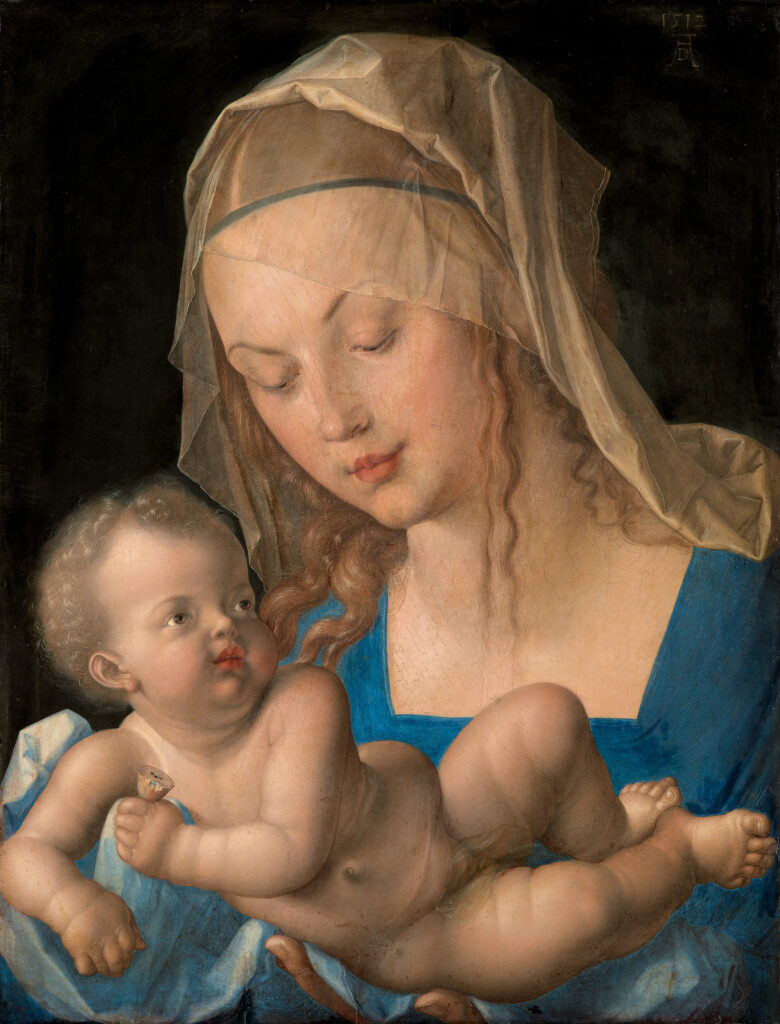May and October are the special months when Catholics traditionally honor the Blessed Virgin Mary. In recent years, Marian piety has seen a recovery from decline during the first decades after Vatican II. The reasons for the eclipse ranged from the alleged “excesses” of Marian devotion among Catholics to ecumenical sensitivity towards Protestants, from a simplistic focus on “Christology” to disparagement of popular devotions as the opiate of Catholic deplorables. Happily, such lame arguments and agendas seem to be disappearing.
A theme that I believe remains undeveloped in Marian theology, however, is her role – along with Jesus Himself – as an exemplar of what it means to be human.
One of St. John Paul II’s favorite principles, already found in his first encyclical, Redemptor hominis, was that Jesus Christ shows what it truly means to be human: “Christ the Lord. Christ the new Adam, in the very revelation of the mystery of the Father and of his love, fully reveals man to himself and brings to light his most high calling. (¶ 8 & 10) That quotation comes directly from Vatican II’s “Pastoral Constitution on the Church in the Modern World,” Gaudium et spes. (¶ 22)
Note that the emphasis is put on Jesus’ humanity. Yes, Jesus fully reveals God to us. But he also reveals man to us. John Paul tirelessly invoked Christ as the model of true humanity, of the human response in love to Love Himself.
What remains relatively undeveloped is how that idea applies to Mary.
Now, Mary’s fullness of grace is not her own; she is the beneficiary of her own Son’s redemption. That said, her privileged benefits were so great that she shared preveniently in that redemption through her Immaculate Conception: Mary, conceived without sin.
The Council of Chalcedon made clear that Jesus’ human nature was intact, whole, entire, and active: what the human being named Jesus did, He did as a real man. That human nature was not, as I think Karl Rahner once opined, just along for the ride.
That said, there may perhaps be some lingering imbalance in how Catholics understand the hypostatic union (if they ever think of it, even if not under that technical term). Thinking of the God-man, we sometimes tend to accentuate the former element.
That’s why getting to know Mary as a model for humanity is important. The theoretical problem doesn’t even enter the picture.

Mary is true man (in the universal sense of “human” that drives some feminists nuts). She is not divine (even though she is “Mother of God”). So she embodies and models what it is to be, live, and act as a human being as God intended all of us to be, live, and act.
One Marian title is the “New Eve,” because – in contrast to the first woman – she lived a truly human, faithful, life.
Granted, Mary’s circumstances are unique: she is free from all sin, original and actual. But that’s unique not because of Mary but because of us. Mary’s life is how we all were supposed to live. Our incapacity to do that is our own doing, not a design flaw in our creation. That God preserved Mary from stain of sin was a special grace, but one that made her what humanity was originally designed to be.
People insist “I’m not perfect.” That’s true. But God neither made us imperfect nor remains content with what we’ve become. Mary shows us what is a truly human life free from the downward tug of sin and its effects (concupiscence).
That we will never be completely like Mary is simply a truth of history: man broke what he was supposed to be. A broken leg can be restored and healed, but some residue of having been broken normally remains. It will never be as strong as a leg that was never broken. A filled tooth will not ache, but to expect that it has all the qualities of the original, unspoiled tooth would be a miracle God didn’t have to grant.
Just two examples of how Mary teaches us true humanity: freedom and the end of her life.
The modern world grossly misunderstands freedom, thinking it places humans in some “neutral” spot between good and evil, “choice” being the end of free action. That’s wrong. Freedom is a means, not an end. The end of human action is goodness not freedom. Goodness is to be done and evil avoided.
Freedom makes that good mine, but it neither renders that choice automatically good nor avoids guilt when used to choose evil. Mary always saw the beauty of God, never the glamour of evil. That gave her choosing a unique aspect that we who are seduced by sin lack. But it doesn’t mean her choice wasn’t truly human. Arguably, our choices are less human.
In defining the dogma of the Assumption, Pope Pius XII spoke not of Mary’s “death” but “the end of her earthly life” to recognize that in whatever way Mary passed from this life to eternity, that transit was unlike death as sinful man knows it. Mary’s Dormition was unique, but that’s because the way the rest of us humans die was never divinely willed, “because God did not make death.” (Wis 1:13) In that sense, Mary’s Assumption is really a kind of “first fruit” of Christ’s Resurrection and Ascension, and an anticipation of our own transfiguration at the Last Judgment.
Catholic thought and spirituality would be much enriched by recovering its Marian aspects and plumbing the truth of her humanity as a way of understanding who and what we, too, are.
*Image: Mary and Child by Albrecht Dürer, 1512 [Kunsthistorisches Museum, Vienna]
You may also enjoy:
Michael Pakaluk’s A Masterpiece on the Immaculate Conception
Brad Miner’s Hail, Holy Queen














